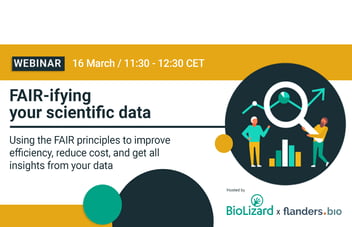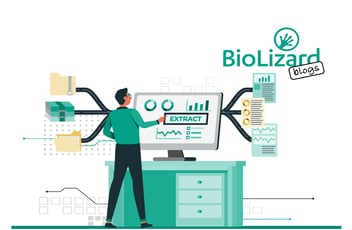How will you know that you have a great R&D data management plan? When you barely have to think about data management anymore.
When BioLizard partners with organizations to build their perfect R&D data management plan, we always plan for future efficiency and success in its maintenance to make sure that it stays hassle-free. To accomplish this, we train internal data stewards within the company to do the ‘aftercare’ of complying with the agreements set out in a data management roadmap. This ensures that as your organization grows and projects progress, it will be possible to seamlessly scale and integrate new data without constantly needing to rework your plan for data management.
Check out this blog article to read more about the benefits of great R&D data management for wetlab scientists and IT professionals alike, or watch our webinar to learn directly from BioLizard’s experts. At the end of the webinar, you will more deeply understand the principles of FAIR data and how they can be applied to improve data findability, accessibility, interoperability, and reusability within your own life science research, as well as the benefits that this can bring to your organization.



